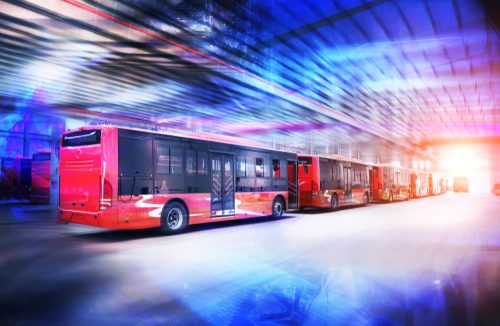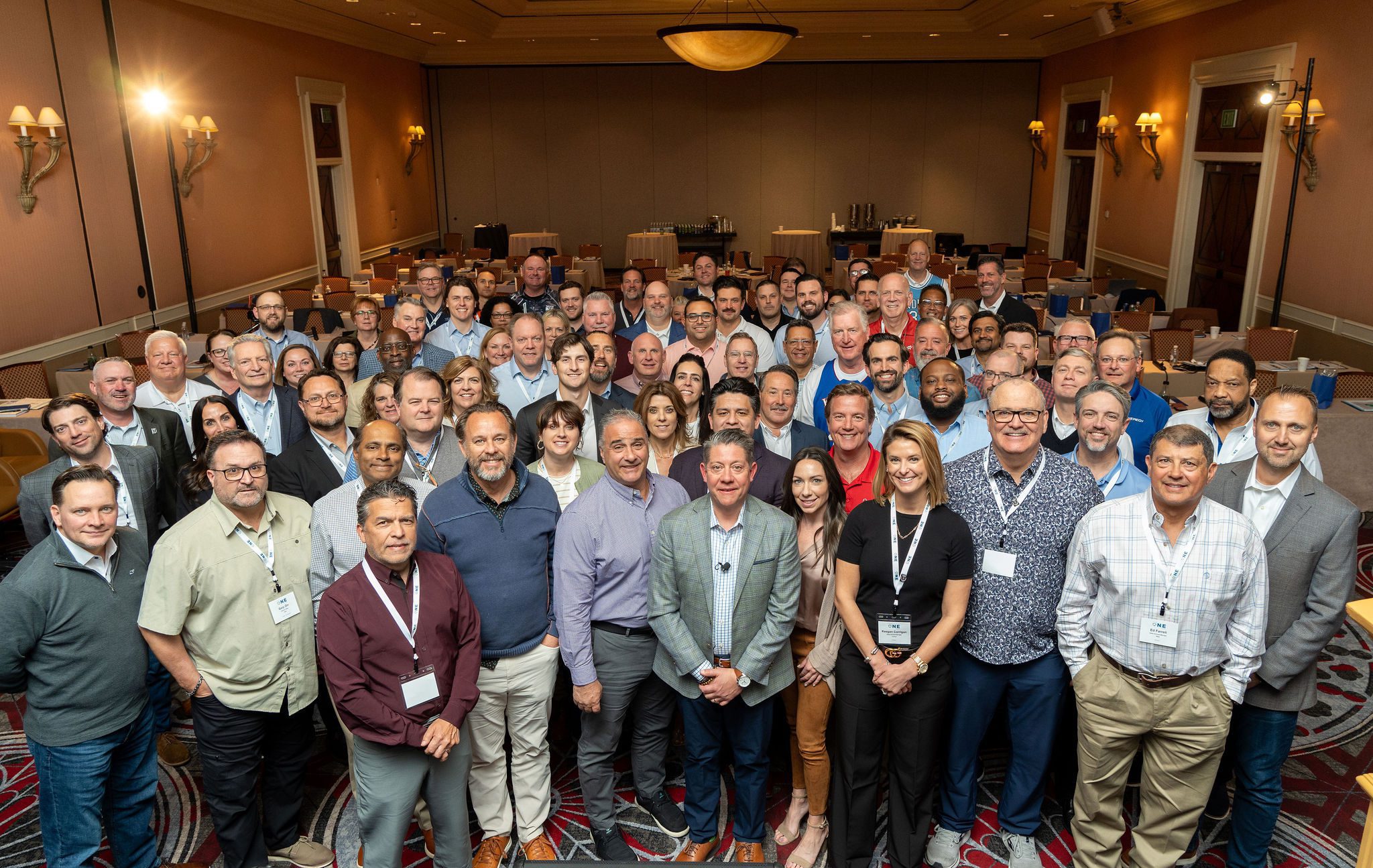By Scott Wisner & Cory Scamihorn
Billions of Dollars Will Be Available Soon, Veregy Will Help You Navigate the Complexities
Vehicle Electrification is here, but what does that really mean? In its most basic form, it’s simply a vehicle that uses electricity to move. Another way to think about it is a Zero Emissions Vehicle (ZEV) where nothing, not even water vapor is exhausted from it. This narrower definition helps to separate hybrids and hydrogen vehicles from the mix. On the outside, these vehicles generally look like any other car, truck, or bus on the road today; it’s what’s under the hood that sets them apart.
There are several advantages to electric drive trains vs. more traditional fossil fuel driven power systems. Perhaps the most obvious is their lack of harmful CO2 emissions and other pollutants associated with fossil fuels. Electric vehicles are also substantially more efficient to operate, converting more of the stored energy into motion than virtually any other fuel source, the average EV costs 60% less to operate as a result. A less obvious but important advantage is their simpler design. Electric vehicles don’t have complicated motors and exhaust systems, meaning there are fewer moving parts that can break, making them 40% less expensive to maintain in the long-term.
While there is a great deal of hype around EVs, it’s important to ask hard questions and to look for real data to support your organization’s needs. Chief among these is, do EVs truly promote decarbonization? To answer that, we first need to look at how much transportation contributes to carbon output in the first place. For that, we look to the International Energy Agency (IEA)1, which estimates that transportation as a whole contributes 21% of all carbon emissions globally. Of that, 75% is attributed to road travel, cars, buses, etc. It’s clear that transitioning a high percentage of the passenger vehicles, buses, and heavy-duty vehicles to EVs would have a large impact on our carbon footprint and the environment. Going further than carbon, millions of tons of other pollutants like sulfur, carbon monoxide, and heavy metals would also be removed from the air we breathe and water we drink.
While it’s clear that there are real and tangible decarbonization benefits to transitioning to EVs it does not come without a cost. According to Kelly Blue Book2 the average electric passenger vehicle costs roughly $10,000 more than a comparable gasoline-powered engine. For buses the difference is starker, with the average electric school bus coming in over $250k dollars more and the average transit bus an additional $300k. However, these costs continue to fall and it’s expected that within the next 5 years electric passenger vehicles will be at price parity with their gas counterparts. One important caveat to the cost question is that it does not factor in lifetime costs or fuel costs. As noted above it is significantly cheaper to fuel an electric vehicle which reduces their operating costs significantly, especially as gas prices continue to rise.
A key unknown that exists, in terms of lifecycle cost, is battery replacement, which is currently quite expensive. The vast majority of EVs come with battery warranties between 8-10 years, with a guarantee that they will still retain 80% of their capacity during the life of the warranty, but the question becomes what happens after that? For some customers, the answer might be to purchase extended warranties, but regardless this is something to take into consideration when planning a transition. The upside to this current reality is that it is expected to change over the next ten years. While battery replacements currently come with a high price point that should fall dramatically as the technology matures and economies of scale take effect. As this happens, the ROI on EVs should continue to improve.
The transition to EVs progresses, and with the recent passing of the Infrastructure Investment and Jobs Act (IIJA), it is set to accelerate, but careful planning will be necessary. For personal passenger vehicles, that comes down to understanding the local charging infrastructure, range of vehicles on the market, and the ownership costs; however, for larger fleets operators like schools and transit authorities, the process is more complicated, and to be ready to take advantage of these optimizations, planning should begin immediately.
This planning should start by defining the goals of any fleet transition based around the lifecycle of current fleets. It’s also encouraged that fleet operators engage with experienced companies, such as Veregy, to help begin developing detailed fleet transition and infrastructure plans. These plans not only serve as a map for the future, they are required for many Federal grants that have been developed to help cover the costs of transitions.
Often overlooked by entities seeking to transition their fleets to EVs is the infrastructure required to service a fully electric fleet. In fact, the infrastructure piece is generally the most complicated and time-consuming part of the process, taking up to a year to fully develop and execute. What’s more these infrastructure improvements need to be completed before new ZEVs have been procured. The reason why is simple, you cannot effectively charge a single bus by plugging it into a standard wall outlet. Charging a single bus this way would take well over 24 hours. For fleet applications, at a minimum, a level 2 charger must be installed and to charge several buses at once, upgraded electrical infrastructure is required.
Other overlooked concerns include ensuring that you choose the correct type of charger to meet a fleet’s duty cycle, like choosing a networked charger vs. a standalone. There are many benefits to choosing a networked charger for fleet charging including:
- Allowing fleet managers to monitor the health of the charger and remotely restart the charger if it encounters an outage.
- Allowing the manufacturer to upload software and firmware updates to keep the charger running at optimal levels.
- Allowing the fleet manager to set up smart charging schedules to help manage power loads and usage rates.
And lastly, it’s important to consider both the short and long-term needs of a given fleet and the quantities needed. This allows fleet owners to phase in their transition and spread costs out over a longer period of time, lessening the burden of transition.
Given the high cost of transitioning to EVs, especially for fleet operators, the recent passing of the IIJA3 is a historic turning point. The bill, ratified by congress in 2021, has created opportunities for school districts, state/local governments, and higher education institutions to accelerate, or make possible, the transition to EVs. The bill authorizes $5 billion dollars for schools to transition to clean school buses and a further $7 billion dollars for transit buses and related infrastructure. This money will be distributed via competitive grants and formula funding and the government has made clear that projects that are ready to go will receive priority in acquiring funding. This further reinforces the need for agencies across the nation to engage companies such as Veregy to begin their fleet transition plans.
The transition to EVs is upon us, and it’s coming fast, and the time to start planning is now. The path to a fully electric future will be a long one and more complicated than most people expect, which is why having the right industry partners to help move the needle forward is critical. To be ready to access the billions of dollars of federal funds coming and to start the path towards an EV fleet, start planning today.
References
- [https://www.iea.org/reports/global-energy-review-co2-emissions-in-2021-2]
- [https://www.cnbc.com/2021/12/29/electric-vehicles-are-becoming-more-affordable-amid-spiking-gas-prices.html#:~:text=The%20average%20transaction%20price%20for,an%20entry%2Dlevel%20luxury%20car]
- [https://www.congress.gov/bill/117th-congress/house-bill/3684/text]






